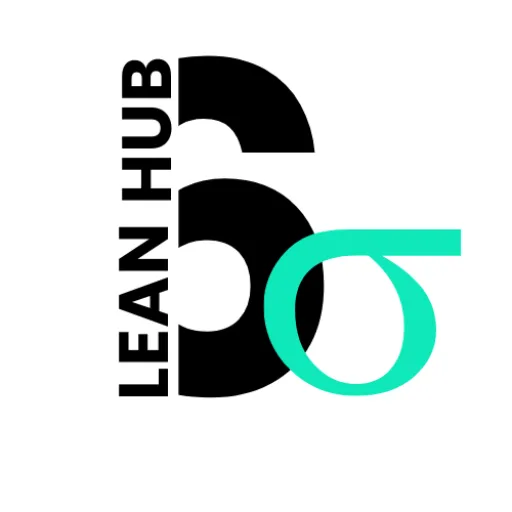Maximizing Efficiency through Continuous Improvement (Kaizen)
The Kaizen philosophy, originating from Japan, embodies the concept of continuous improvement. At its core, Kaizen emphasizes the idea that small, incremental changes can lead to significant enhancements over time. This approach is not merely a set of tools or techniques; rather, it is a mindset that encourages everyone within an organization to contribute to the improvement process.
By fostering a culture where every employee feels empowered to suggest changes, we can create an environment ripe for innovation and efficiency. As we delve deeper into the Kaizen philosophy, we recognize that it is built on several key principles. First and foremost, it promotes the idea that improvement is a never-ending journey.
We must embrace the notion that there is always room for enhancement, regardless of how successful we may already be. Additionally, Kaizen encourages collaboration and teamwork, as it recognizes that diverse perspectives can lead to more effective solutions. By engaging all levels of staff in the improvement process, we can harness a wealth of ideas and insights that might otherwise go untapped.
Key Takeaways
- Kaizen is a Japanese philosophy that focuses on continuous improvement and making small, incremental changes to processes and systems.
- Implementing Kaizen in the workplace involves creating a culture of continuous improvement, where all employees are encouraged to identify and implement small improvements on a daily basis.
- Setting clear goals for continuous improvement is essential for guiding the efforts of employees and ensuring that the organization is moving in the right direction.
- Training and empowering employees is crucial for the successful implementation of Kaizen, as they are the ones who will be responsible for identifying and implementing improvements.
- Utilizing lean principles, such as reducing waste and increasing efficiency, is an important aspect of Kaizen and can help organizations achieve their continuous improvement goals.
Implementing Kaizen in the Workplace
Encouraging Open Communication
We can establish regular meetings or brainstorming sessions where team members are encouraged to voice their thoughts on potential improvements. By actively listening to our colleagues and valuing their input, we can foster a sense of ownership and commitment to the Kaizen process.
Integrating Kaizen into Daily Routines
Moreover, we should consider integrating Kaizen into our daily routines and workflows. This could involve setting aside time for team members to reflect on their tasks and identify areas for improvement. By making continuous improvement a part of our daily activities, we can ensure that it becomes ingrained in our organizational culture.
Utilizing Visual Management Tools
Additionally, we can utilize visual management tools, such as Kanban boards or process maps, to help track progress and highlight areas that require attention.
These tools not only enhance transparency but also serve as constant reminders of our commitment to Kaizen.
Setting Clear Goals for Continuous Improvement
Establishing clear goals is essential for driving continuous improvement within our organization. These goals should be specific, measurable, achievable, relevant, and time-bound (SMART). By defining what we aim to achieve through our Kaizen initiatives, we can create a roadmap that guides our efforts and keeps us focused on our objectives.
For instance, if we want to reduce production time, we might set a goal to decrease it by 15% within six months. In addition to setting specific goals, we must also ensure that they align with our overall organizational strategy. This alignment helps us prioritize our improvement efforts and allocate resources effectively.
As we work towards these goals, it is crucial to communicate them clearly to all employees. When everyone understands the objectives and their role in achieving them, we can foster a sense of unity and purpose that drives our continuous improvement initiatives forward.
Training and Empowering Employees for Kaizen
| Metrics | Target | Actual |
|---|---|---|
| Number of employees trained in Kaizen principles | 100 | 85 |
| Employee satisfaction with Kaizen training | 90% | 92% |
| Number of Kaizen improvement suggestions submitted | 50 | 65 |
| Percentage of employees empowered to implement Kaizen changes | 80% | 75% |
Training plays a pivotal role in empowering employees to embrace the Kaizen philosophy. We must provide our team members with the necessary skills and knowledge to identify areas for improvement and implement effective solutions. This could involve workshops on problem-solving techniques, process mapping, or data analysis.
By equipping our employees with these tools, we enable them to take ownership of their work and contribute meaningfully to the improvement process. Furthermore, we should encourage a culture of experimentation and learning. Mistakes should be viewed as opportunities for growth rather than failures.
By fostering an environment where employees feel safe to try new approaches and learn from their experiences, we can stimulate creativity and innovation. When team members are empowered to take initiative and make decisions, they become more engaged in their work and more invested in the success of our continuous improvement efforts.
Utilizing Lean Principles for Efficiency
Lean principles complement the Kaizen philosophy by focusing on maximizing value while minimizing waste. As we strive for continuous improvement, we can adopt lean methodologies to streamline our processes and enhance efficiency. This involves analyzing our workflows to identify bottlenecks or redundancies that hinder productivity.
By eliminating these inefficiencies, we can create a more agile organization that responds quickly to changing demands. One effective lean tool is the Value Stream Mapping (VSM) technique, which allows us to visualize the flow of materials and information throughout our processes. By mapping out each step in our workflows, we can pinpoint areas where value is added and where waste occurs.
This visual representation not only helps us understand our current state but also serves as a foundation for developing targeted improvement strategies. By integrating lean principles into our Kaizen initiatives, we can create a powerful synergy that drives efficiency and effectiveness.
Identifying and Eliminating Waste in Processes
A critical aspect of both Kaizen and lean methodologies is the identification and elimination of waste within our processes. Waste can take many forms, including excess inventory, unnecessary motion, waiting times, overproduction, defects, and underutilized talent. By systematically analyzing our workflows, we can uncover these inefficiencies and develop strategies to address them.
To effectively eliminate waste, we can employ various techniques such as the 5S methodology—Sort, Set in order, Shine, Standardize, and Sustain. This approach encourages us to organize our workspaces systematically, ensuring that everything has its place and is easily accessible. By maintaining a clean and organized environment, we not only enhance productivity but also promote a culture of continuous improvement where everyone takes responsibility for their surroundings.
Measuring and Monitoring Progress
To ensure the success of our continuous improvement initiatives, we must establish metrics to measure and monitor our progress. These metrics should align with the goals we set earlier and provide us with valuable insights into how well we are performing. Key performance indicators (KPIs) can help us track various aspects of our operations, such as production efficiency, quality levels, customer satisfaction, and employee engagement.
Regularly reviewing these metrics allows us to assess whether our improvement efforts are yielding the desired results. If we find that certain initiatives are not producing the expected outcomes, we can pivot our strategies or explore alternative approaches. Additionally, sharing progress updates with all employees fosters transparency and accountability within the organization.
When everyone is aware of how their contributions impact overall performance, it reinforces our collective commitment to continuous improvement.
Sustaining a Culture of Continuous Improvement
Sustaining a culture of continuous improvement requires ongoing commitment from all levels of the organization. It is essential that leadership actively champions the Kaizen philosophy and demonstrates its importance through their actions. When leaders prioritize continuous improvement initiatives and allocate resources accordingly, they set a powerful example for employees to follow.
Moreover, recognizing and celebrating successes—no matter how small—can help reinforce the value of continuous improvement within our organization. By acknowledging individual contributions and team achievements, we create a positive feedback loop that motivates everyone to remain engaged in the process.
As we continue to embrace the Kaizen philosophy as part of our organizational DNA, we position ourselves for long-term success in an ever-evolving business landscape.
In conclusion, by understanding the principles of Kaizen and implementing them effectively in our workplace, we can foster a culture of continuous improvement that drives efficiency and innovation. Through clear goal-setting, employee empowerment, lean principles, waste elimination, progress measurement, and sustained commitment from leadership, we can create an environment where every team member feels valued and motivated to contribute to our collective success. As we embark on this journey together, let us embrace the spirit of Kaizen and strive for excellence in all that we do.
FAQs
What is Continuous Improvement (Kaizen)?
Continuous Improvement, also known as Kaizen, is a Japanese business philosophy that focuses on making small, incremental improvements to processes, products, or services on a regular basis. It involves the entire organization, from top management to the front-line employees, and aims to create a culture of continuous learning and improvement.
What are the key principles of Continuous Improvement (Kaizen)?
The key principles of Continuous Improvement (Kaizen) include:
1. Process-oriented approach: Focusing on improving processes rather than blaming individuals.
2. Employee involvement: Encouraging all employees to contribute ideas for improvement.
3. Continuous small changes: Making small, incremental improvements on a regular basis.
4. Standardization: Establishing standard procedures and practices to maintain improvements.
5. Elimination of waste: Identifying and eliminating waste in processes to improve efficiency.
How does Continuous Improvement (Kaizen) benefit organizations?
Continuous Improvement (Kaizen) benefits organizations by:
1. Increasing efficiency and productivity.
2. Improving quality and customer satisfaction.
3. Reducing waste and costs.
4. Fostering a culture of innovation and learning.
5. Empowering employees and improving morale.
What are some tools and techniques used in Continuous Improvement (Kaizen)?
Some common tools and techniques used in Continuous Improvement (Kaizen) include:
1. PDCA (Plan-Do-Check-Act) cycle for problem-solving and decision-making.
2. 5S methodology for workplace organization and standardization.
3. Value stream mapping to identify and eliminate waste in processes.
4. Kaizen events or workshops for focused improvement projects.
5. Quality circles for employee involvement in problem-solving.
How can organizations implement Continuous Improvement (Kaizen)?
Organizations can implement Continuous Improvement (Kaizen) by:
1. Establishing a clear vision and commitment to continuous improvement from top management.
2. Providing training and support for employees to participate in improvement activities.
3. Creating a system for capturing and implementing employee ideas for improvement.
4. Setting measurable goals and regularly reviewing progress.
5. Celebrating and recognizing small improvements and successes.






